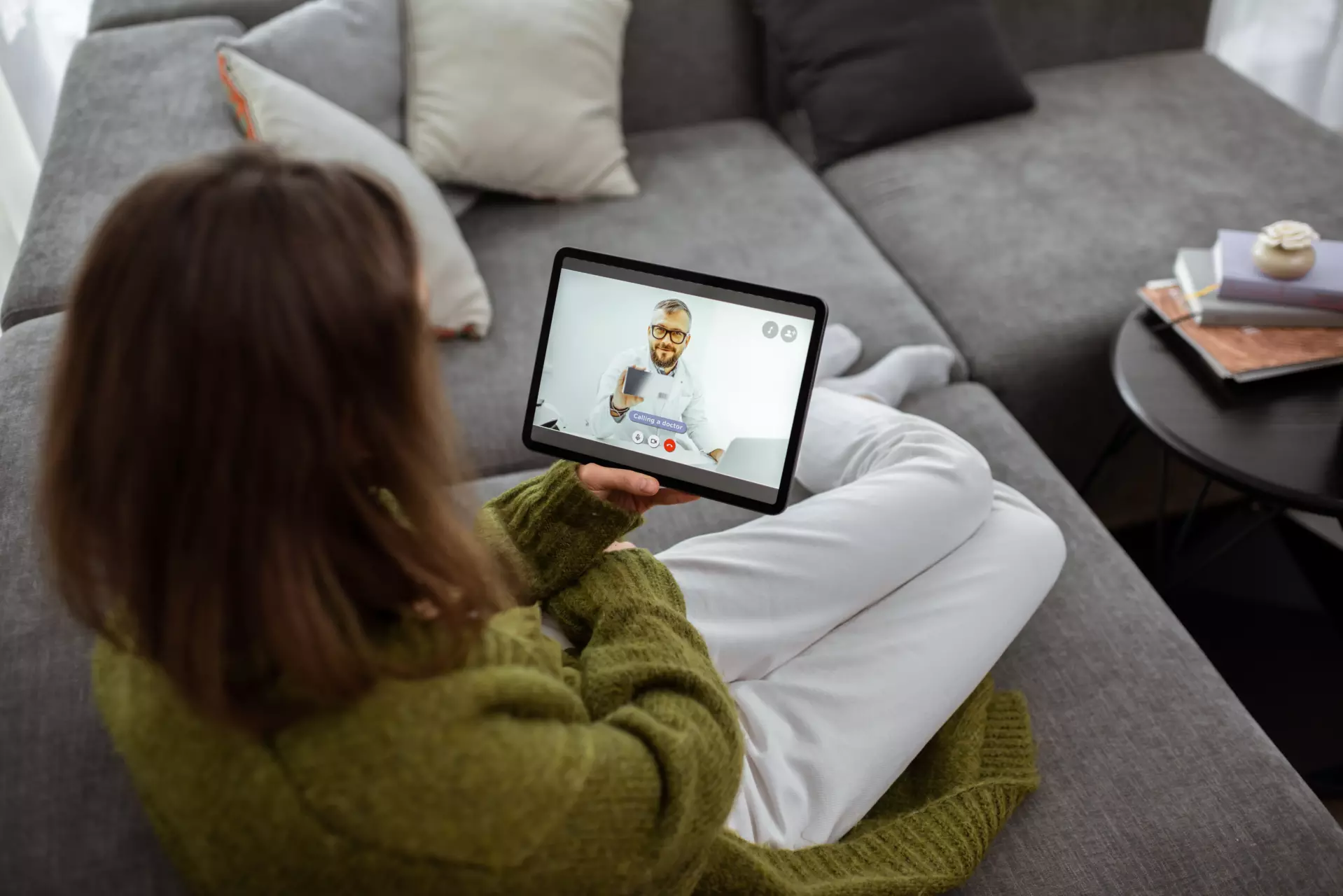Imagine consulting with your primary care physician from the comfort of your own home without the hassle of commuting or waiting rooms. Picture a scenario where you can receive personalized medical advice, prescriptions, and ongoing care, all through a secure online platform. This is the power of telehealth for direct primary care.
But what makes it truly worth considering? Well, the benefits are numerous and compelling.
From improved access to healthcare and enhanced patient-provider communication to cost-effective and convenient solutions, telehealth can revolutionize how we receive primary care.
But there’s more to it than just convenience and accessibility.
So, let’s explore why choosing telehealth for direct primary care might be the best decision you could make for your health and well-being.
Improved Access to Healthcare
Accessing healthcare has become easier and more convenient with the introduction of telehealth in direct primary care. Virtual consultations and remote monitoring are two key advancements that have revolutionized how people receive medical care. With telehealth, you can now consult with healthcare professionals from the comfort of your house, eliminating the need to travel to a doctor’s office or wait in crowded waiting rooms. This saves you time and reduces the risk of exposure to contagious illnesses.
Virtual consultations allow you to connect with doctors through video calls, enabling them to assess your condition, provide medical advice, and even prescribe necessary medication. You can discuss your symptoms, ask questions, and receive personalized care without leaving your house. This is particularly beneficial for those living in remote areas or with limited mobility.
Remote monitoring is another valuable aspect of telehealth. With the help of wearable devices and smartphone apps, healthcare providers can remotely monitor your vital signs, such as heart rate, blood pressure, and blood glucose levels. This continuous monitoring allows for early detection of any potential health issues, enabling timely intervention and preventive measures. It also promotes a sense of security, as you know that professionals are closely monitoring your health.
Telehealth improves access to healthcare and fosters a sense of belonging. Providing convenient and personalized care makes you feel valued as a patient. It eliminates barriers such as distance, making healthcare accessible to everyone, regardless of location. With telehealth, you can receive the care you need, when you need it, without feeling isolated or left out.
Convenient and Time-Saving
Save time and enjoy the convenience of telehealth for direct primary care. With flexible scheduling and remote consultations, telehealth allows you to take control of your healthcare without sacrificing your precious time.
Here are four ways in which telehealth can make your life easier:
- Flexible Scheduling: Telehealth eliminates the need to wait in long queues at the doctor’s office. Instead, you can schedule appointments at a time that suits you best. Whether early in the morning or late at night, telehealth ensures you have access to healthcare whenever you need it.
- Remote Consultations: Say goodbye to the hassle of commuting to a doctor’s office. With telehealth, you can have consultations from the comfort of your own home. Simply log in to the telehealth platform, and you’ll be connected with a healthcare professional who can address your concerns and provide guidance.
- No Time Wasted: Telehealth allows you to avoid the time-consuming process of traveling to and from appointments. Instead, you can use that time to focus on other important aspects of your life. Whether spending time with your family or pursuing your hobbies, telehealth ensures you can make the most of your day.
- Convenience at Your Fingertips: With telehealth, you can access healthcare services with just a few clicks. Whether at work, traveling, or simply at home, you can connect with a healthcare professional whenever needed. This convenience level ensures you can receive the care you deserve without disrupting your daily routine.
Enhanced Patient-Provider Communication
With telehealth’s convenience and time-saving benefits, you can now experience enhanced communication with your healthcare provider. Telehealth offers unique opportunities for patient engagement and remote monitoring, allowing you to have more meaningful interactions with your provider from the comfort of your own home.
One of the key advantages of telehealth is the ability to communicate with your healthcare provider in real time. You can have face-to-face conversations with your provider through video consultations, just as you’d in a traditional office visit. This personal connection fosters a sense of belonging and allows for a more collaborative approach to your healthcare.
In addition to video consultations, telehealth platforms often offer secure messaging systems. This means you can message your provider at any time, whether you have a quick question or need to discuss a health concern. The ability to communicate asynchronously ensures that your provider is always accessible, giving you peace of mind and a sense of belonging to a supportive healthcare community.
Remote monitoring is another aspect of telehealth that enhances patient-provider communication. With wearable devices and home monitoring kits, your healthcare provider can track your vital signs, medication adherence, and other health metrics from a distance. This allows for proactive interventions and personalized care plans while maintaining a strong connection between you and your provider.
Cost-Effective and Affordable
Telehealth offers an affordable and cost-effective solution for accessing quality healthcare services. With the rising healthcare costs, finding affordable options is crucial for many individuals and families. Telehealth provides financial benefits that can help alleviate the burden of expensive medical bills.
Here are some reasons why telehealth is a cost-effective and affordable choice:
- Reduced healthcare costs: Telehealth eliminates the need for in-person visits, which can be costly due to transportation expenses, parking fees, and missed workdays. You can save money on these additional expenses by opting for virtual consultations.
- Affordable subscription plans: Many telehealth providers offer subscription plans that allow you to access unlimited virtual visits for a fixed monthly fee. These plans often come at a fraction of the cost of traditional healthcare plans, making them an affordable option for individuals and families.
- Less out-of-pocket expenses: Telehealth services typically have lower co-pays and deductibles than in-person visits. This means you can receive quality healthcare without breaking the bank or sacrificing financial stability.
- Prescription savings: Telehealth platforms often have partnerships with pharmacies, enabling them to offer discounted prescription medications. This can lead to significant savings on monthly medication costs, making telehealth an even more cost-effective option.
Continuity of Care
Maintaining a consistent and uninterrupted healthcare experience is essential for optimal patient care. Continuity of care is crucial when receiving medical attention in ensuring patients feel supported and valued throughout their healthcare journey. Telehealth for direct primary care offers a solution that promotes continuity of care while prioritizing patient satisfaction.
With telehealth, patients can access their primary care provider from the comfort of their homes. This means that even if you cannot physically visit your doctor’s office, you can still receive the necessary care and attention. Telehealth appointments allow for regular check-ins and follow-ups, ensuring that your healthcare provider is updated with your progress. This continuous communication helps build a strong doctor-patient relationship, fostering trust and confidence in your care.
In addition to regular appointments, telehealth platforms provide opportunities for secure messaging and virtual consultations. These features allow patients to contact their healthcare provider with any concerns or questions, promoting ongoing communication and support. This accessibility and immediacy of care contribute to continuity, as patients can easily connect with their primary care provider whenever needed.
Studies have shown that continuity of care is associated with higher levels of patient satisfaction. Patients who feel they’re receiving consistent and personalized care are more likely to be satisfied with their healthcare experience. Telehealth for direct primary care ensures continuity of care and enhances patient satisfaction by providing convenient access to healthcare professionals and fostering a strong doctor-patient relationship.
Integration of Technology
Incorporating technology is essential for direct primary care to ensure a seamless and efficient healthcare experience. Integrating technology into your practice can streamline processes and enhance the quality of care you provide to your patients. Here are four ways technology can revolutionize your direct primary care practice:
- Electronic Health Records (EHRs): Implementing EHRs allows you to digitally store and access patient information, eliminating the need for cumbersome paper records. This not only saves time but also reduces the risk of errors in documentation. With EHRs, you can easily track patient history, medications, and test results, enabling more informed and personalized care.
- Telehealth Platforms: With the advent of telehealth platforms, you can provide remote consultations and follow-ups to your patients. This saves them the hassle of traveling to your clinic and enables you to reach patients in remote areas. You can use video calls and messaging features to address their concerns, provide advice, and monitor their progress, all from the comfort of their homes.
- Remote Monitoring Devices: Technology allows remote monitoring devices to track patients’ health conditions in real-time. Whether it’s wearable devices that measure vital signs or apps that monitor blood glucose levels, remote monitoring enables proactive healthcare management. By closely monitoring your patients’ health, you can detect any issues early on and intervene promptly.
- Appointment Scheduling and Reminders: Technology simplifies the appointment scheduling process, allowing patients to book appointments online at their convenience. Automated reminders can also be sent through email or text messages, reducing the likelihood of missed appointments. This improves patient satisfaction and helps you manage your schedule more effectively.
Summary
So, why should you choose telehealth for direct primary care?
Well, it’s simple. With telehealth, you’ll have improved access to healthcare, saving you time and effort.
The enhanced patient-provider communication ensures that your needs are met effectively.
And here’s an interesting statistic to paint a picture: did you know that 92% of telehealth patients reported high satisfaction levels with their virtual visits?
Imagine the convenience and comfort of receiving quality care from the comfort of your own home.


